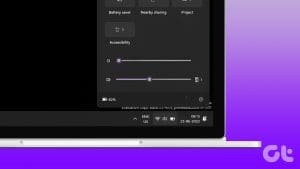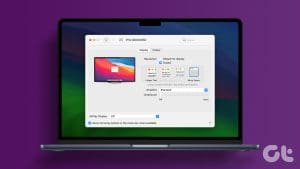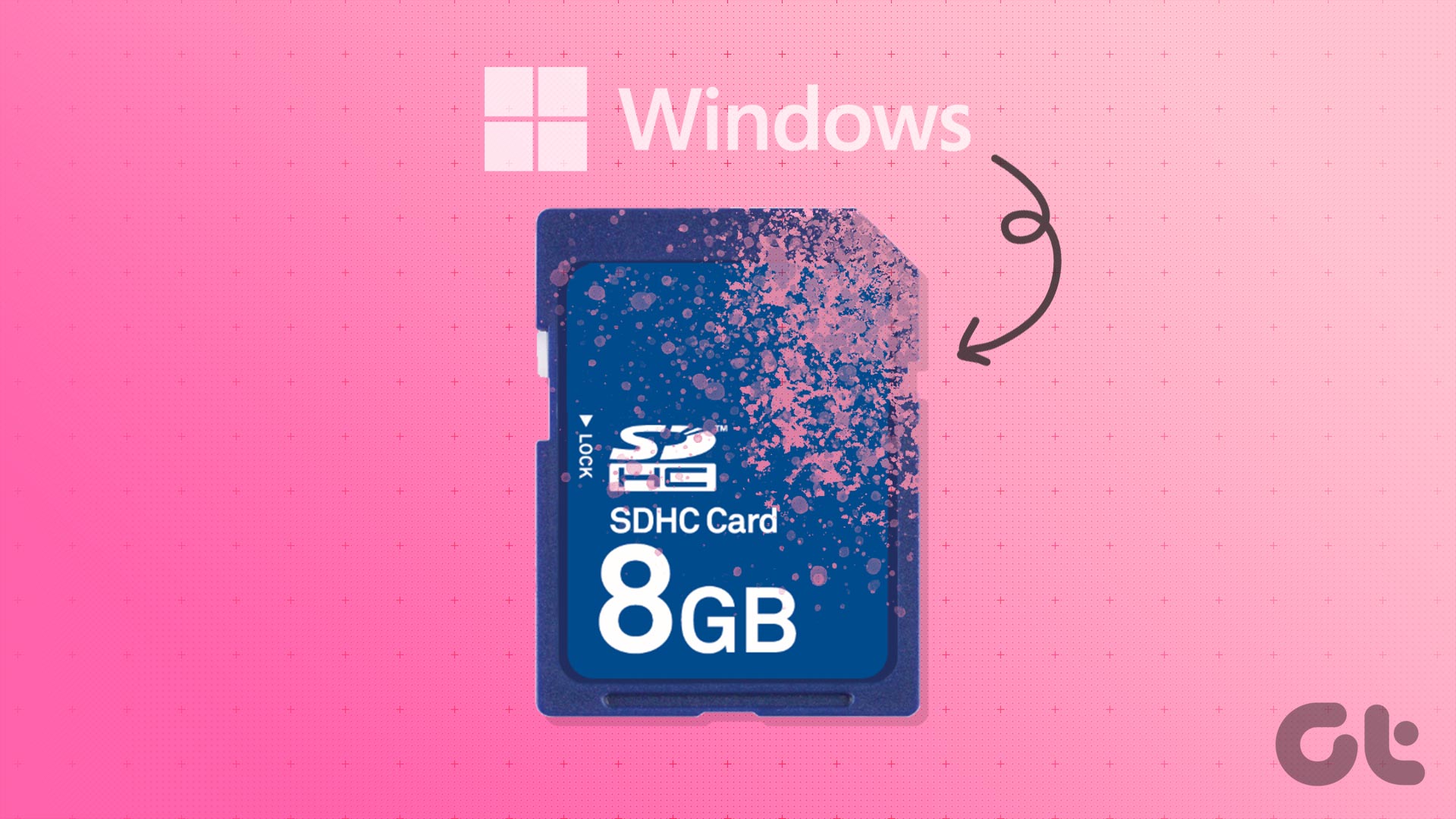Method 1: Change Screen Timeout Using Settings
You can easily change the Windows 11 screen timeout duration using the Settings app. This will allow you to adjust the screen timeout duration for when your device is plugged in and on battery power. Follow the below steps to do it.
Step 1: Use the Windows + I key to open Settings. Click on System from the sidebar and click on Power & battery.
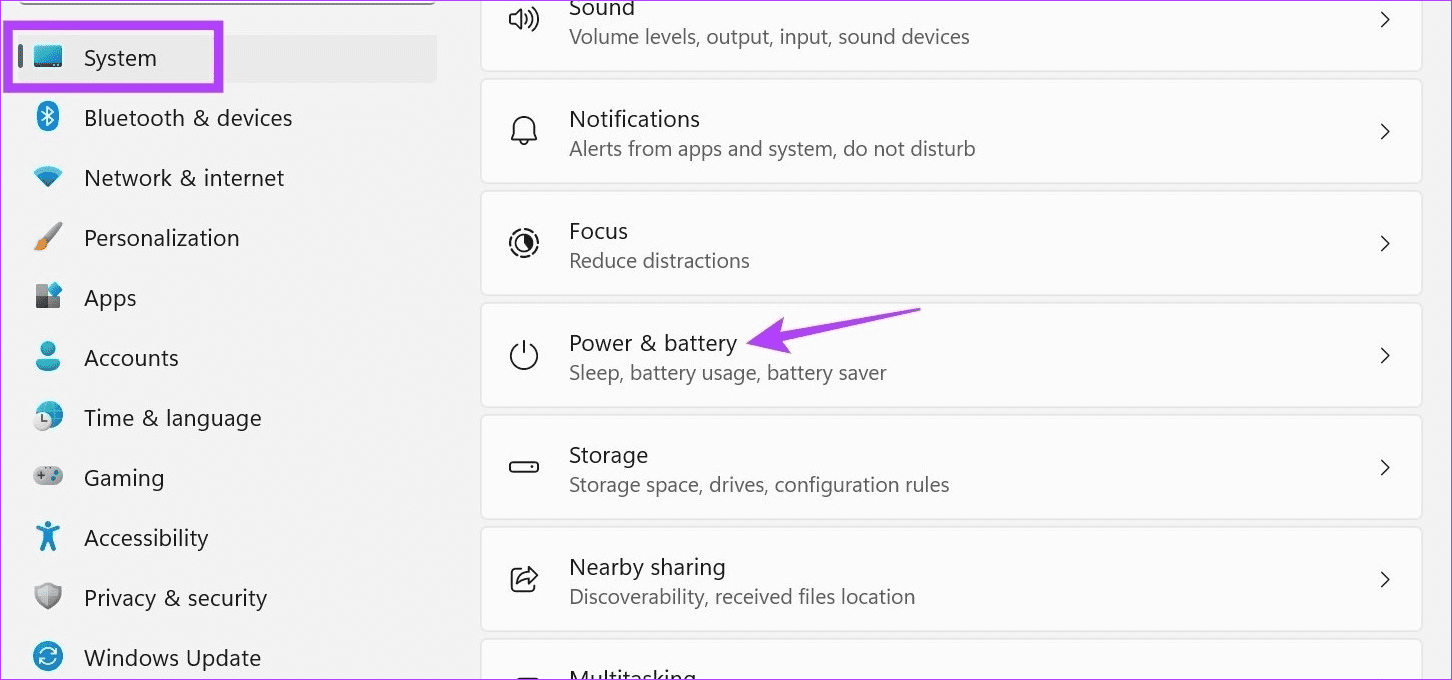
Step 2: Here, click on Screen and sleep to expand the options.
Step 3: Now, click on the drop-down next to the On battery power, turn off my screen after to adjust the screen timeout duration when on battery power.
Step 4: Then, click on the drop-down menu next to When plugged in, turn off my screen after and select the screen timeout duration for when your device is plugged in.
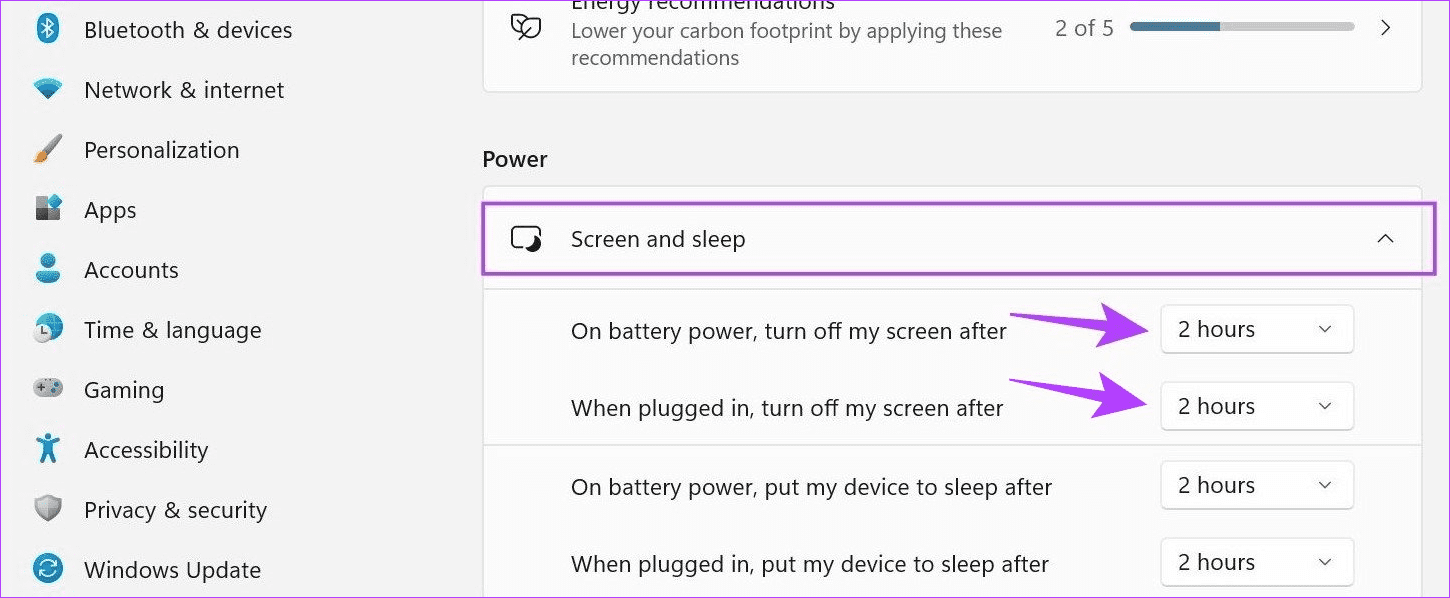
Also Read: How to fix Windows 11 screen keeps locking automatically
Method 2: Change Screen Timeout Using Control Panel
Two ways can be used to change screen timeout in Windows 11 when using the Control Panel. So, apart from using the Power Options menu, you can also use the Advanced Power Plan settings to make the necessary changes. Here’s how to do it.
I. Using Power Options
Step 1: Open the Control Panel and click on Hardware and Sound.
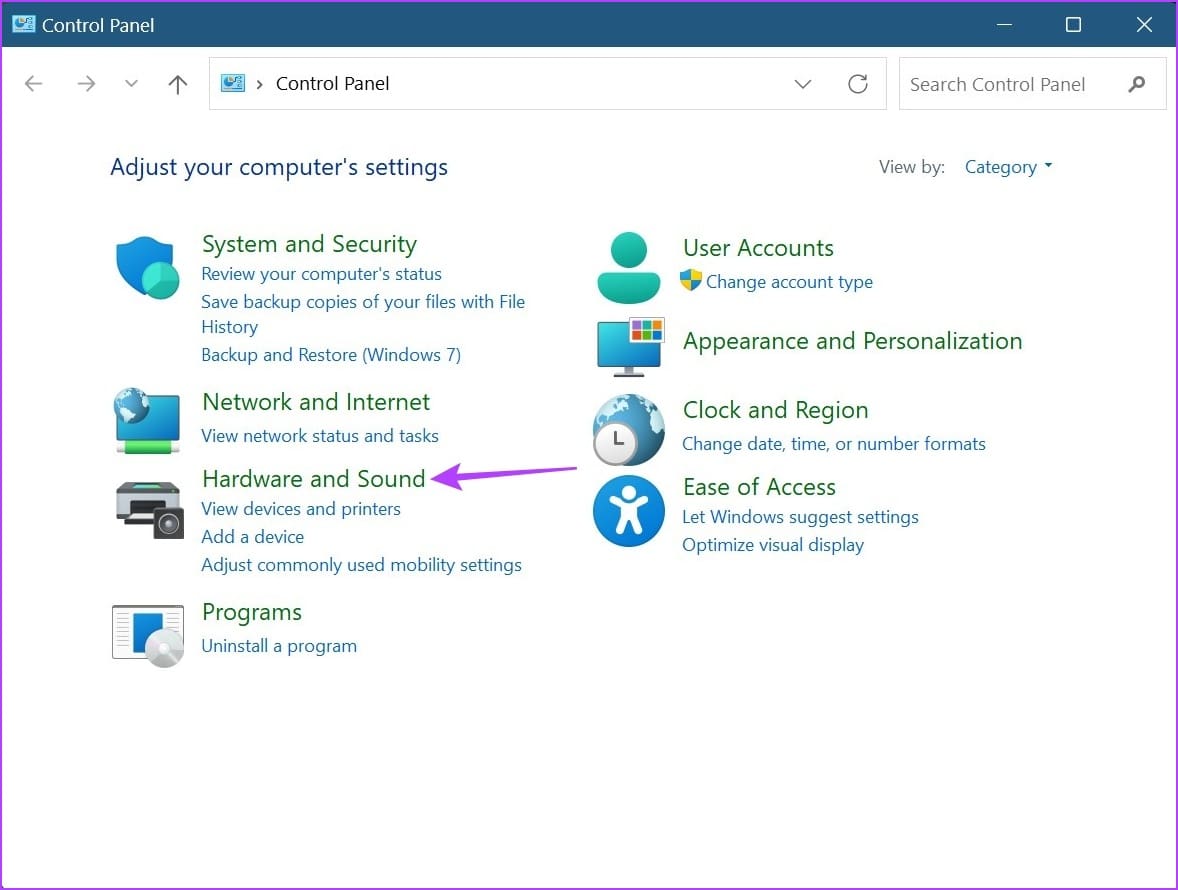
Step 3: Here, click on Power Options.
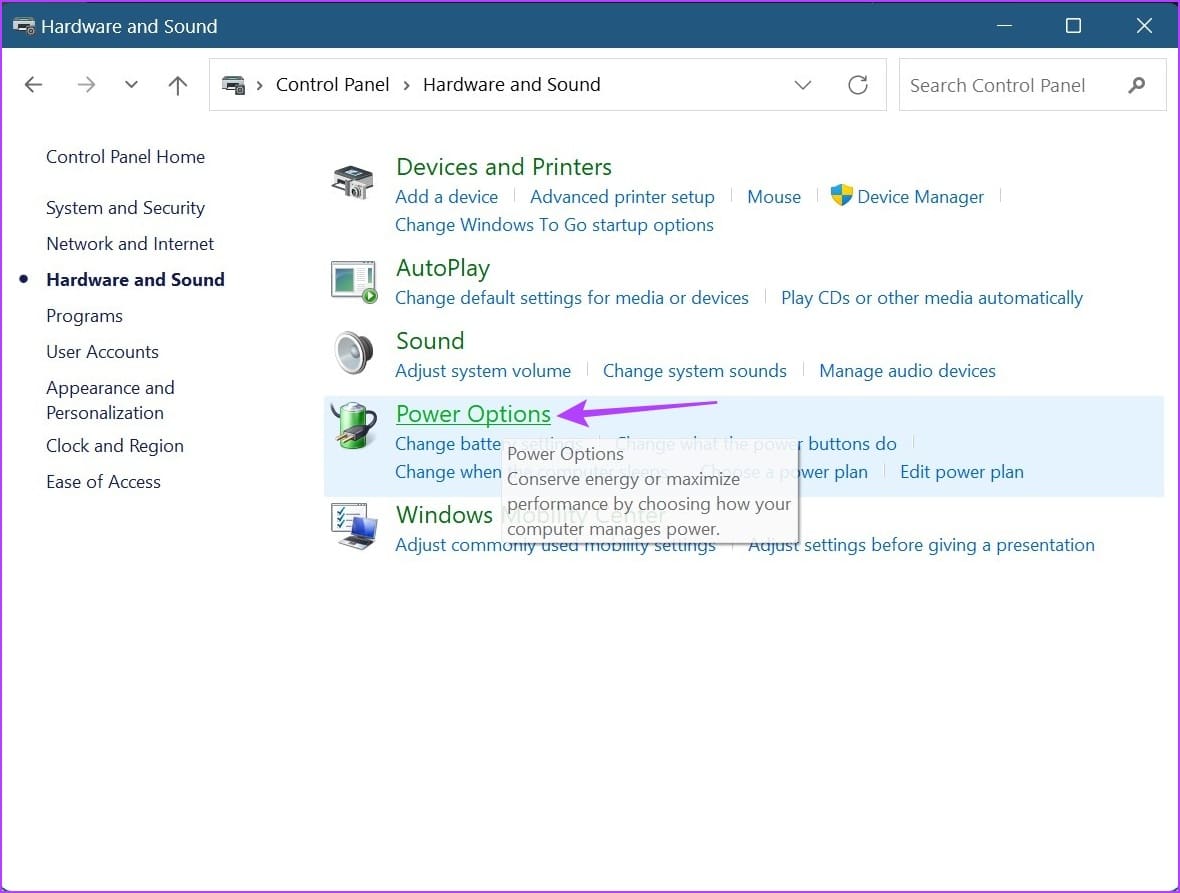
Step 4: From the sidebar, click on Choose when to turn off the display.

Step 5: Click on the first drop-down in front of Turn off the display to adjust screen timeout when on battery power.
Step 6: Then, click on the second drop-down to select the preferred screen timeout duration for when your device is plugged in. Once done, click on Save changes.
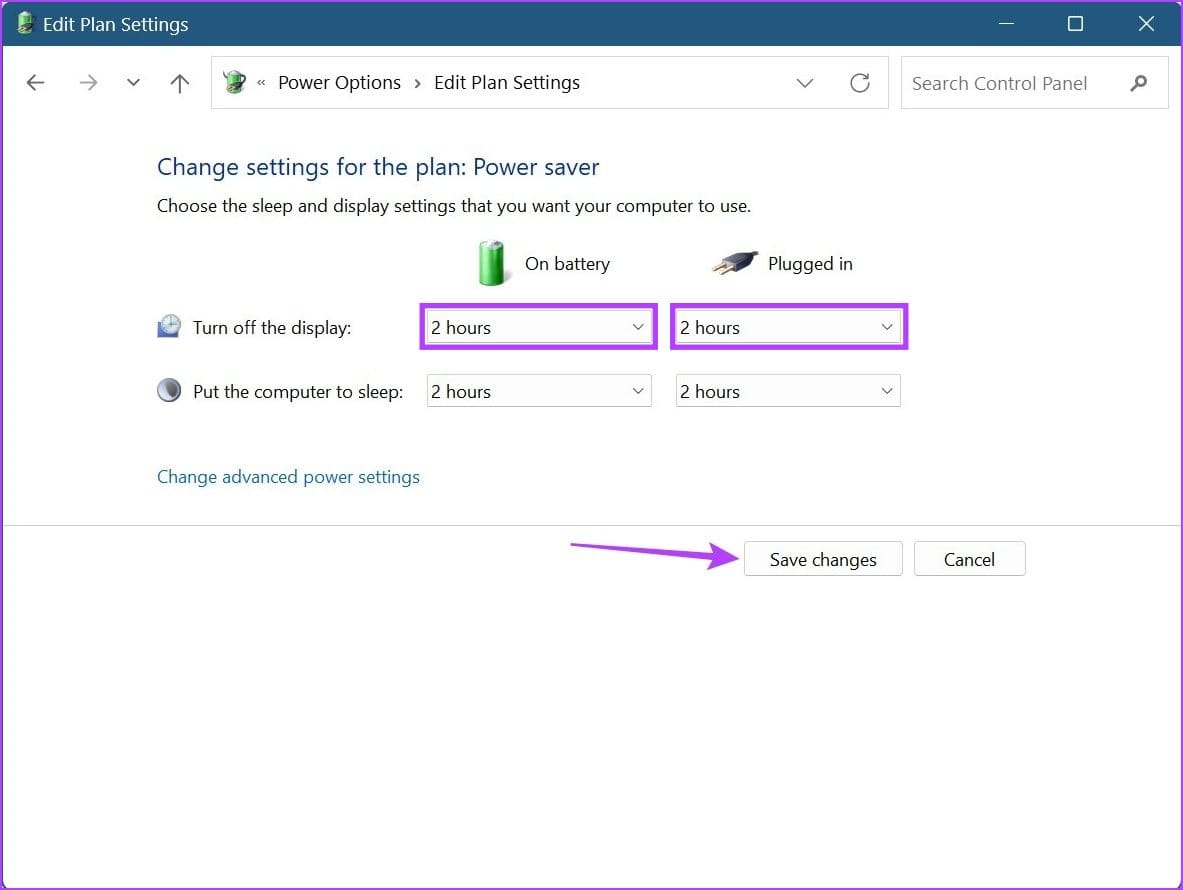
II. Using Advanced Power Plan Settings
Step 1: On the Edit Plan Settings page in the Control Panel, click on Change advanced power settings.
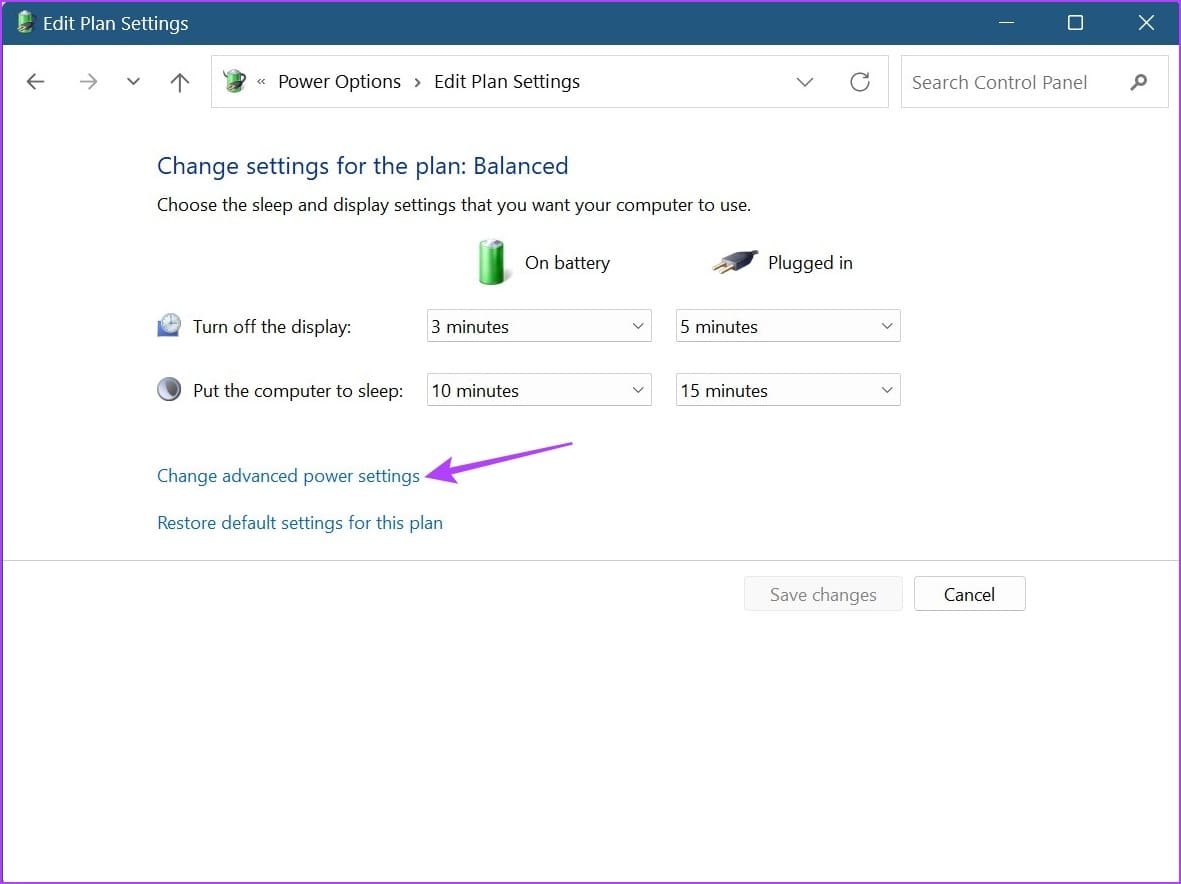
Step 2: Scroll down and click on Display. Once it expands, click on Turn off display after. Then, click on the time duration in front of On battery and select a duration.
Step 3: Click on the time duration in front of Plugged in and select a duration. Then, click on Apply and OK to save and exit the window.
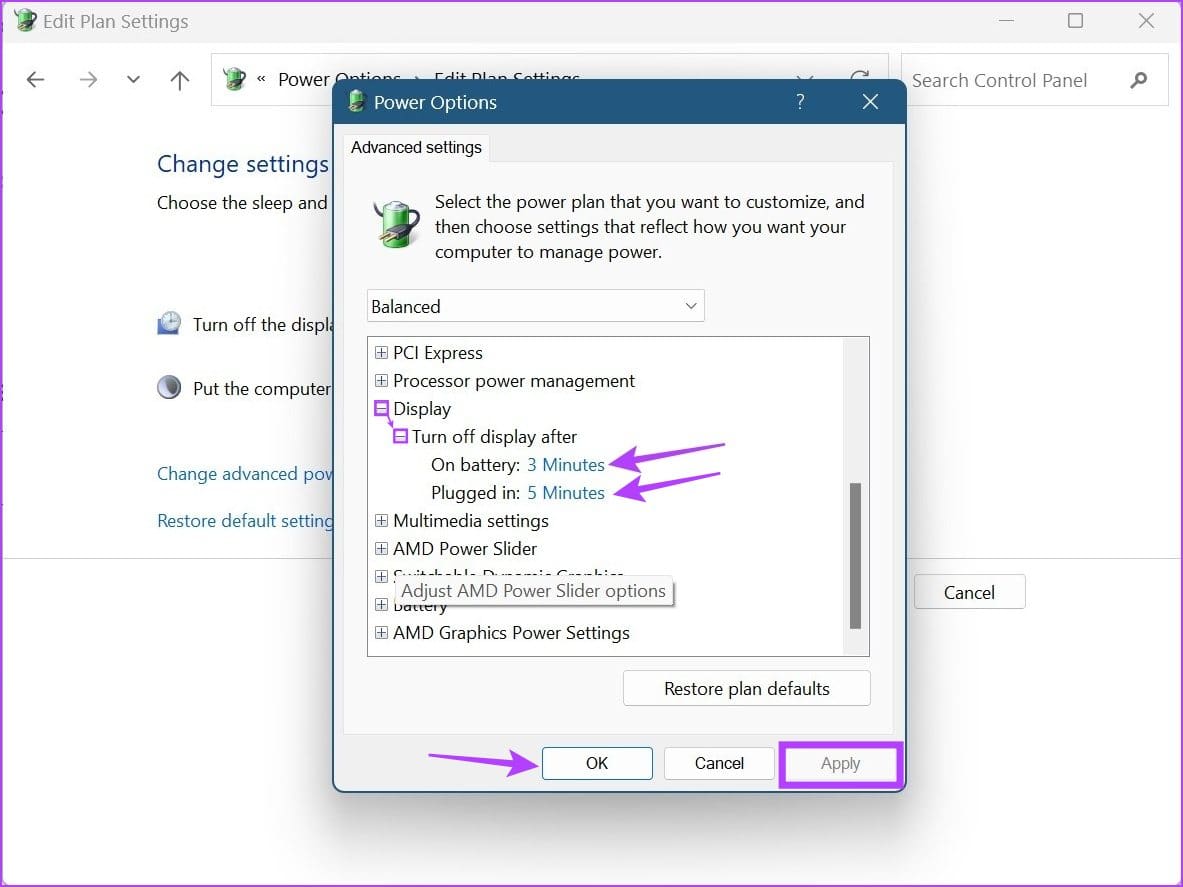
Tip: You can also use the Registry Editor to change the screen timeout settings in Windows 11. However, if you’re unfamiliar with using it, it can cause issues with critical Windows 11 resources.
Method 3: Modify Screen Timeout Using Command Prompt
While you can also use the Command Prompt to modify screen timeout in Windows 11, unlike the ways listed above, here you will have to input the exact duration you want in minutes. Here’s how.
Step 1: Open Command Prompt and type the following command. Replace the x with the time duration you want to set. This value should be in minutes.
powercfg -change -monitor-timeout-dc x
Step 2: Then, press enter. This will change the screen timeout duration when your device is on battery power.
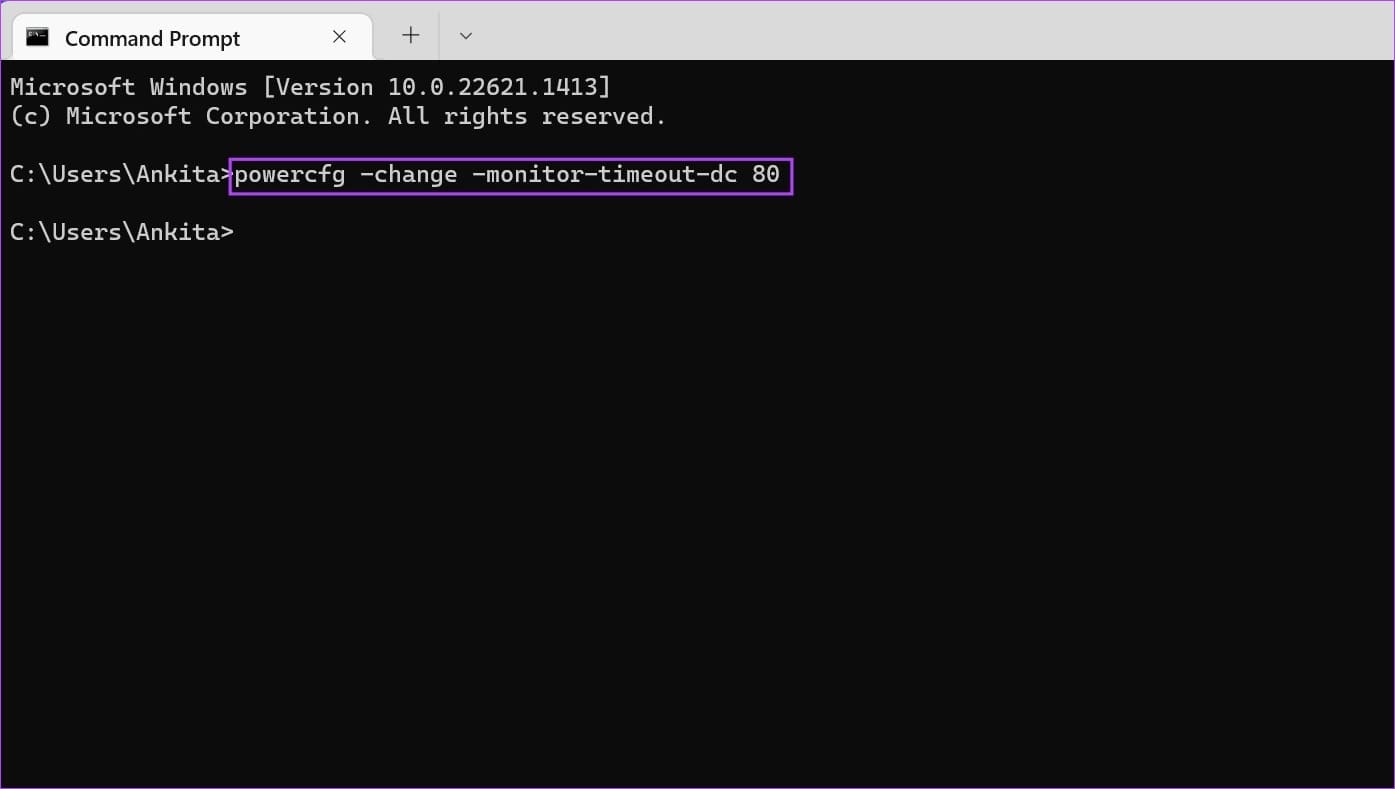
Step 3: You can also type the following command to change the screen timeout duration when your device is plugged in. Replace the x with your desired duration in minutes and press enter.
powercfg -change -monitor-timeout-ac x
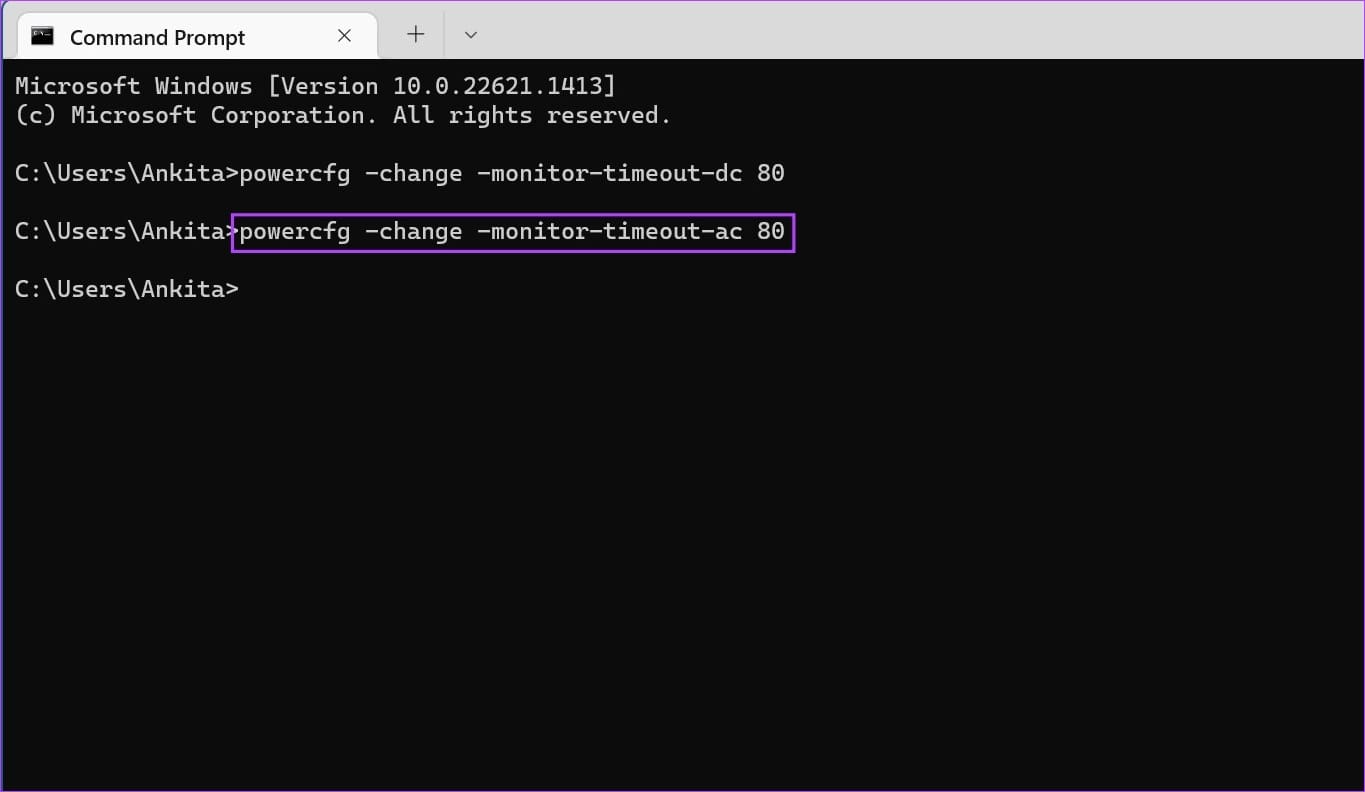
If you want, you can also set up wake timers using the Command Prompt to make your Windows 11 device’s screen wake up at a scheduled time.
Was this helpful?
Last updated on 13 April, 2024
The article above may contain affiliate links which help support Guiding Tech. The content remains unbiased and authentic and will never affect our editorial integrity.



